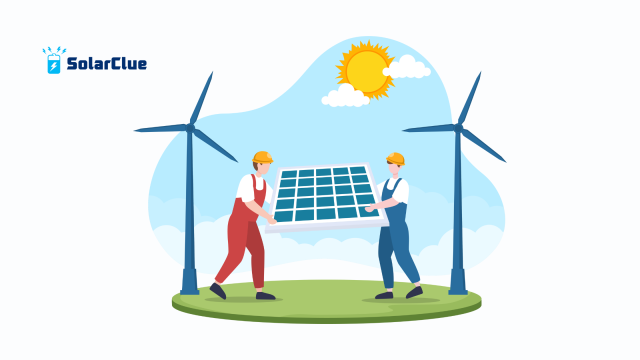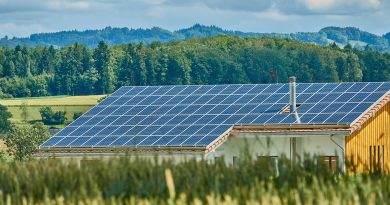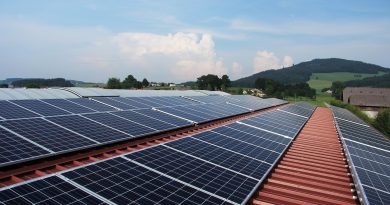Complete Guide to Solar Power System Installation
With climate concerns rising and electricity prices soaring, the shift to solar energy is no longer just an eco-friendly trend—it’s a smart financial decision. A proper Solar Power System Installation allows homeowners and businesses to harness the power of the sun to generate clean, renewable electricity, significantly cutting energy bills and reducing environmental impact.
Table of Contents
- 1 Why Go Solar?
- 2 What Makes Up a Solar Power System?
- 3 Steps to Solar Power System Installation
- 4 What Does It Cost to Install Solar Power Systems?
- 5 Government Incentives & Subsidies
- 6 Maintenance Tips for Solar Power Systems
- 7 Debunking Common Solar Myths
- 8 How to Choose the Right Solar Installer
- 9 The Bright Future of Solar in India
- 10 Conclusion
- 11 FAQs
Why Go Solar?
✅ Clean and Green Energy
Solar power is a renewable energy source that produces no air pollution, no water pollution, and no greenhouse gases. It’s the most sustainable way to meet our increasing energy demands.
✅ Reduced Electricity Bills
Installing a solar power system drastically lowers your monthly utility costs. In many states, you can also sell excess power back to the grid.
✅ Energy Independence
With a properly installed solar panel system, you’re no longer at the mercy of rising energy prices or power outages.
What Makes Up a Solar Power System?

🔧 Core Components
-
Solar Panels – Capture sunlight and convert it to DC electricity
-
Inverter – Converts DC to AC electricity
-
Mounting Structure – Secures the solar panels to your roof or land
-
Battery Storage – Stores excess energy (for off-grid or hybrid systems)
-
Monitoring System – Tracks your system’s performance in real-time
📦 System Types
-
Grid-Tied: Works with the utility grid
-
Off-Grid: Ideal for remote areas without grid access
-
Hybrid: Combines both grid connection and battery storage
Steps to Solar Power System Installation
1. Assess Your Energy Needs
Start by analyzing your past electricity bills. This helps determine the size and capacity of the system required.
2. Site Inspection
A solar installer evaluates roof orientation, angle, shading, and space availability to optimize solar panel placement.
3. Get a Customized Quote
Trusted companies like SolarClue provide detailed quotations based on your power usage, roof conditions, and budget.
4. Design & Permits
Engineers design a system blueprint, and all necessary permits are obtained from local authorities.
5. Installation
Once approved, the team installs the solar panels, inverter, and wiring. This process usually takes 1–3 days.
6. Grid Connection & Activation
After inspection, your system is connected to the grid, and you can begin using solar energy immediately.
What Does It Cost to Install Solar Power Systems?
The price of Solar Power System Installation in India generally ranges between ₹50,000 to ₹1,50,000 per kW. The cost depends on factors like system type, panel quality, and installation complexity.
Government Incentives & Subsidies
To promote solar energy, the Indian government offers generous subsidies:
-
Up to 40% subsidy for rooftop solar panel systems under 3 kW
-
Additional tax benefits under Section 80-IA and low-interest loans
You can read more on policies and updates at blog.solarclue.com.
Maintenance Tips for Solar Power Systems
🧹 Keep Panels Clean
Dust and dirt can lower efficiency. Clean your solar panels with water and a soft brush every 1–2 months.
🔍 Monitor System Performance
Use a solar monitoring app to track energy output and detect issues early.
🛠 Annual Maintenance
Many providers offer AMC (Annual Maintenance Contracts) to keep your system in top condition.
Debunking Common Solar Myths
“Solar doesn’t work in cloudy weather”
False! Solar panels can still produce electricity on cloudy days—just at a reduced rate.
“Too expensive for the average home”
Wrong again. With subsidies and dropping prices, solar power is more affordable than ever.
“It’s hard to maintain”
Modern solar power systems are low-maintenance and can last 25+ years with minimal care.
How to Choose the Right Solar Installer
-
✅ Look for MNRE-registered providers
-
✅ Check for system warranties (20–25 years)
-
✅ Read reviews and request case studies
-
✅ Ensure post-installation support is available
We recommend starting with the experts at SolarClue.
The Bright Future of Solar in India
India is targeting 280 GW of installed solar power capacity by 2030. With growing demand and government support, the future of solar energy here is shining bright.
Conclusion
A well-planned Solar Power System Installation can revolutionize your energy consumption—cutting costs, increasing independence, and supporting a greener planet. Whether you live in a city or a remote village, solar energy is a practical and powerful solution. Ready to take the first step? Let SolarClue help you light up your life with the sun.
FAQs
1. How much area do I need for a 1 kW system?
You’ll need about 80–100 sq. ft. of shadow-free space.
2. Can solar panels be installed on flat roofs?
Yes! Custom mounting structures allow easy installation on flat surfaces.
3. How long do solar panels last?
Most solar panels come with a performance warranty of 25 years.
4. Will my system work during a power cut?
Only if you have an off-grid or hybrid system with battery backup.
5. Is solar energy viable in all regions of India?
Absolutely. Most parts of India receive ample sunlight year-round.
✨Still thinking about going solar? Visit solarclue.com today and get your free customized quote or explore solar insights at blog.solarclue.com. Let’s make your rooftop the source of your energy future!




